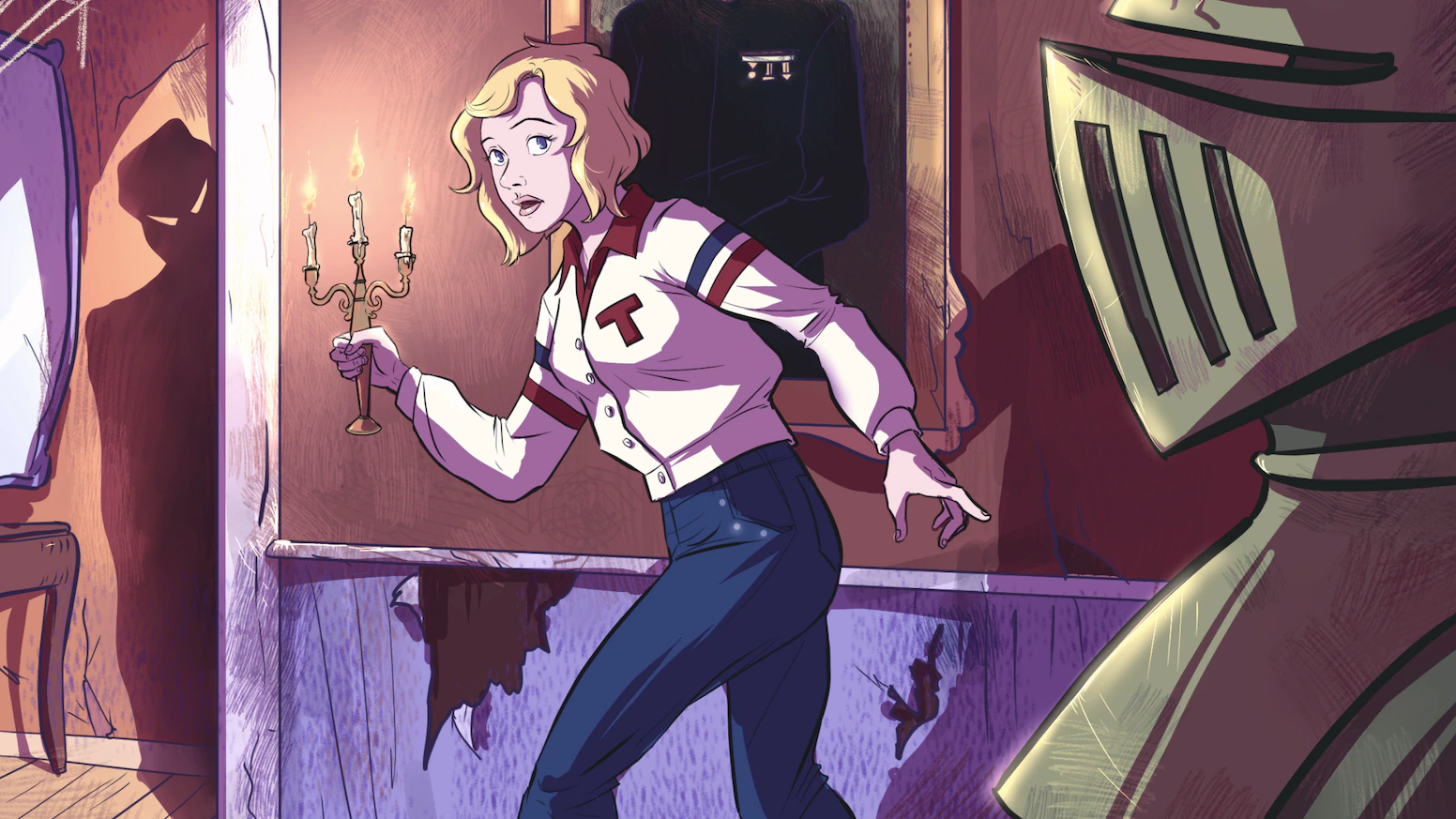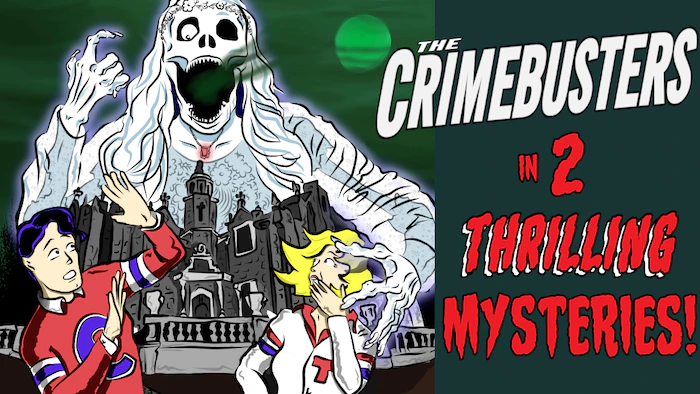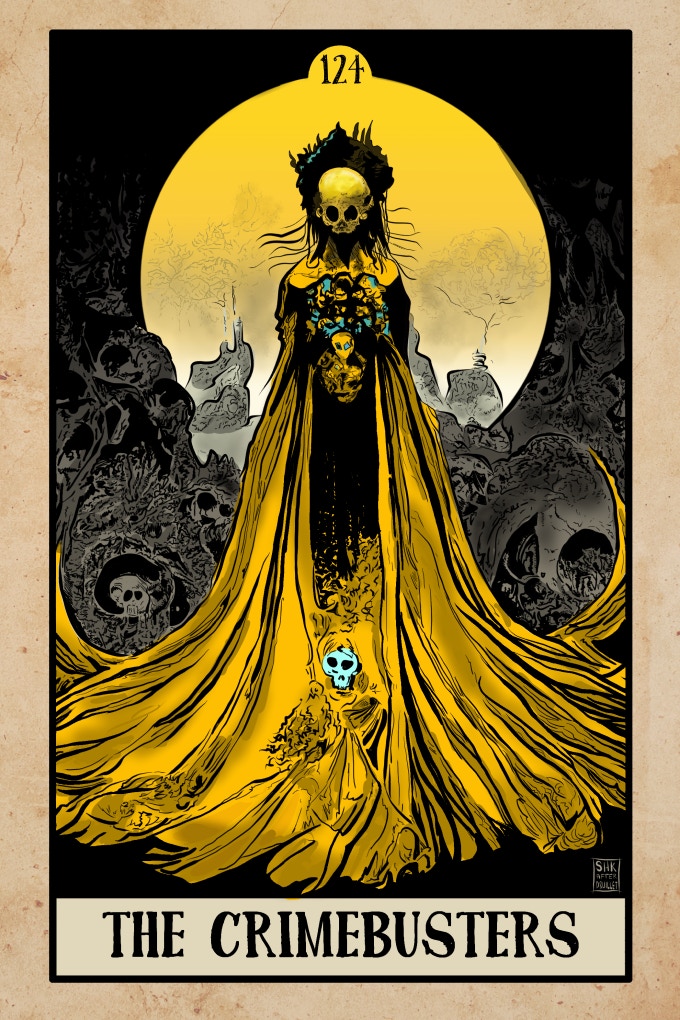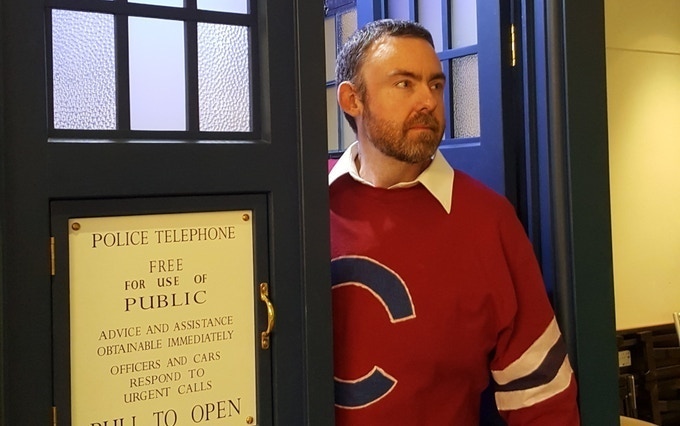How Scott Harris-King Battled Burnout on the Way to His Best Kickstarter Ever
by Clay Adams
Scott Harris-King felt burned out.
He was about to hit launch on his fourth Kickstarter campaign in ten months, and the only "breaks" he’d taken in between were for fulfillment.
So as he readied himself for yet another go at crowdfunding, he wondered…
“How can I keep up this pace?”
In this edition of the ComixLaunch Spotlight, you’ll learn:
- how to find and hire an artist for your comic book Kickstarter
- why cross-promoting is essential for crowdfunding success
- plus: how to avoid burnout--for you and your backers
How to Find and Hire an Artist for Your Comic Book Kickstarter
Fortunately, Scott had already started thinking about ways to combat burnout before he began working on the book. One way he decided to lighten his load was by hiring someone else to draw it.
“This was my first issue of The Crimebusters working with an artist, as I drew the first four issues myself. It was actually a very smooth process (which I have learned from other titles I am now working on is not always the case!) as my new artist Mac Radwanski is very professional and easy to work with.”
Still, there was a learning curve. Scott had never worked from a full script before, since he usually did his own thumbnails directly from a short outline. Now he had to learn how to provide just enough direction in the script to get his ideas across without stifling his artist’s creativity.
Another thing he had to learn? Where to find freelancers who are looking for work—and best practices once he found one whose samples he liked.
“I have found most of my artists on Facebook through a group called Connecting Comic Book Writers and Artists, where a lot of artists looking for work post their portfolios. The structure of the contract for me depends mostly on what the artist is comfortable with; some like a portion up front, some don’t, etc. For full issues, I typically split the payment up into 3 or 6 page increments and pay as they deliver the pages.”
Once he nailed down his artist, it was time to start thinking about one of the most important aspects of his campaign.

The Importance of a Great Project Image
This time, Scott wanted to focus on drawing in new backers to the campaign. And he realized that for people shopping on Kickstarter, his choice of main project image could make all the difference.
“My original project image was an action shot from the cover of issue #5 of The Crimebusters, featuring one of my main characters wielding a sword while fighting off a dinosaur. It had a lot going for it, but I ultimately felt it was playing more to my established readers by focusing on the plot of this specific issue.”
So he changed it to a more “generic” image of one of his main characters creeping through a haunted house. While it didn’t tell the story of the issue, it did a great job telling the story of the series.
“I felt like it really captured the essence of what the comic is about in a way that would be immediately accessible and recognizable to potential new backers.”
Scott ended up with more than twice as many project followers than any of his previous issues, which he credits in part to the project image.
This change in approach was a big part of Scott’s overall crowdfunding strategy.

Why Cross-Promoting Campaigns is Crucial for Kickstarter Success
Like some of the most successful Kickstarter creators, Scott has started treating the platform as a marketplace—targeting his promotional efforts at buyers who are already there.
“I tend to focus heavily on cross-promoting within the Kickstarter platform. It can be very hard to convince people on Instagram or Facebook or other social media platforms to leave that platform, go to another site, and buy a comic. So it makes sense to me to focus my efforts on the people that are already on Kickstarter, and who are actively buying comics on Kickstarter! It removes the biggest barriers.”
As part of this effort, Scott routinely cross-promotes with other creators, typically finding others inside ComixLaunch who have active campaigns at the same time.
“I don’t want to leave anyone out, but there are a number of people who have been very helpful with my cross-promotions in particular… Among those who I have regularly cross-promoted are Roy Johnson, Will Allred, Brant Fowler, Matta Sorcier, Ben Lacy, Tim Stiles, Sam Noir, and many more. Without their help, I certainly wouldn’t be where I am, and I won’t be able to get where I am going!”
With his marketing strategy to new readers in place, it was time to face the daunting question:
Would his regular backers return?

How to Combat Backer Burnout on Kickstarter
For his first three years making comics, Scott was launching one or two Kickstarters per year. But now he’s on pace to do five, possibly six, over the calendar year.
With that many launches so close together, he’s noticed that some of his most loyal backers seem to be experiencing burnout.
“People who previously would back every campaign are now maybe skipping one or two, maybe catching up later, or maybe deciding to only support one series instead of all of them. It can seem like a bit of a Catch-22 in that the best way to bring in more backers is also to do more projects, which could burn out your current backers. So the way I am choosing to deal with this is to lean in and do not just more projects, but more varied projects.”
This strategy has been embraced by entrepreneurs for years: diversify your product line.
“My first nine Kickstarters have all been projects in the same connected universe, which is supernatural adventure mystery in the vein of Scooby-Doo. But my next project is a new epic fantasy series inspired by D&D and 70s sword and sorcery comics like Conan and Warlord. My aim is to not just bring in new backers, but a whole new demographic of backers; optimally, going forward, I can alternate launches between the two different properties to potentially grow both while also keeping both fresh.”
That is, of course, if Scott doesn’t burn out first.

How to Deal with Creator Burnout on Kickstarter
Ultimately, the thing that weighed on Scott the most was the relentless nature of promotion.
“A campaign needs to be constantly fed in order to stay alive, but it means it can be hard to find a break when every single day there are updates, posts, and emails you need to send to keep driving people to your campaign.”
At a certain point, Scott had to ask himself if he wanted to try and wring every last possible dollar out of the campaign, or could he allow himself to be happy with what he had? Scott decided that for his own sanity, he’d ease off the accelerator and let the campaign’s momentum carry it the rest of the way.
“Moving forward, I think getting further ahead before the campaign begins can lessen the grind. Having the comic 100% done beforehand is extremely helpful, but also pre-preparing batches of social media posts as well as stretch goals and such can make the actual campaign less stressful.”
In the end, Scott pulled in his highest backer total for an issue of THE CRIMEBUSTERS, plus his highest dollar amount for any campaign yet—and it felt like a springboard to taking his business to the next level.
Not bad for a burnout.

What’s Next?
By hitting the funding and backer levels he did, Scott felt validated in his decision to hire an artist for the book. Now he’s ready to launch the trade collection for the first five issues—and start diversifying with that aforementioned sword & sorcery comic.
“It's an epic fantasy series called Quest. I wanted to tell a different kind of story, but I also wanted to bring in a new and different audience. My hope is to combat backer fatigue by both growing my base, while also having two different backer bases so I can alternate launches to keep both fresh.”
And if Scott could do it all over again, he’d encourage himself to hire more freelancers so he can go bigger, faster.
“You can’t have a snowball effect if there’s no snow. I would tell my younger self to put in more money at the start and get things going faster. You can always make more money, but nobody has ever been able to make more time.”
Connect with Scott:
Website:
Social Media:
Freebie:
Would You Like to Learn the Strategies Scott and Other Talented Creators are Using to Take Your Launches to the Next Level?
Then attend an upcoming FREE online ComixLaunch Workshop and learn the keys to making your next launch your best launch ever!

